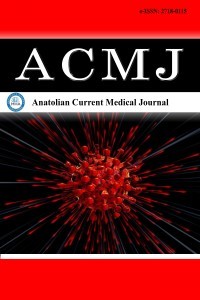1.
Wu WC, Lai YW, Chou YC, et al. Serum uric acid level as a harbinger of type 2 diabetes: a prospective observation. Int J Environ Res Public Health. 2020;17(7):2277. doi:10.3390/ijerph17072277
2.
Thomazini F, de Carvalho BS, de Araujo PX, Franco MDC. High uric acid levels in overweight and obese children and their relationship with cardiometabolic risk factors: what is missing in this puzzle? J Pediatr Endocrinol Metab. 2021;34(11):1435-1441. doi: 10.1515/jpem-2021-0211
3.
Han T, Lan L, Qu R, et al. Temporal relationship between hyperuricemia and insulin resistance and its impact on future risk of hypertension. Hypertension. 2017;70(4):703e11. doi:10.1161/HYPERTENSIONAHA. 117.09508
4.
Wei F, Li J, Chen C, et al. Higher serum uric acid level predicts non-alcoholic fatty liver disease: a 4-year prospective cohort study. Front Endocrinol (Lausanne). 2020;11:179. doi:10.3389/fendo.2020.00179
5.
Sirota JC, McFann K, Targher G, et al. Elevated serum uric acid levels are associated with non-alcoholic fatty liver disease independently of metabolic syndrome features in the United States: liver ultrasound data from the National Health and Nutrition Examination Survey. Metabolism. 2013;62(3):392-399. doi:10.1016/j.metabol.2012.08.013
6.
Cardoso AS, Gonzaga NC, Medeiros CC, et al. Association of uric acid levels with components of metabolic syndrome and nonalcoholic fatty liver disease in overweight or obese children and adolescents. J Pediatr (Rio J). 2013;89(4):412-418. doi:10.1016/j.jped.2012.12.008
7.
Marshall WA, Tanner JM. Variations in pattern of pubertal changes in girls.Arch Dis Child. 1969;44(235):291-303. doi:10.1136/adc.44.235.291
8.
Marzuillo?P, Del Giudice?EM, Santoro?N. Pediatric non-alcoholic fatty liver disease: new insights and future directions. World J Hepatol. 2014; 6(4):217-225. doi:10.4254/wjh.v6.i4.217
9.
Vajro?P, Lenta?S, Socha?P, Dhawan?A, McKiernan?P, Baumann?U. ?Diagnosis of nonalcoholic fatty liver disease in children and adolescents: position paper of the ESPGHAN hepatology committee. J Pediatr Gastroenterol Nutr. 2012;54(5):700-713. doi:10. 1097/MPG.0b013e318252a13f
10.
Anderson?EL, Howe?LD, Jones?HE, Higgins?JP, Lawlor?DA, Fraser?A. The prevalence of non-alcoholic fatty liver disease in children and adolescents: a systematic review and meta-analysis. PLoS One. 2015; 10(10):e0140908. doi:10.1371/journal.pone.0140908
11.
Barrera F, George J. The role of diet and nutritional intervention in managing patients with NAFLD. Clin Liver Dis. 2014;18(1):91-112. doi: 10.1016/j.cld.2013.09.009
12.
Rupasinghe K, Hind J, Hegarty R. Updates in metabolic dysfunction-associated fatty liver disease (MAFLD) in children. J Pediatr Gastroenterol Nutr. 2023;77(5):583-591. doi:10.1097/MPG.0000000000003919
13.
Jensen T, Abdelmalek MF, Sullivan S, et al. Fructose and sugar: a central mediator of non-alcoholic fatty liver disease. J Hepatol. 2018;68(5):1063-1075. doi:10.1016/j.jhep.2018.01.019
14.
Muriel P, López-Sánchez P, Ramos-Tovar E. Fructose and the liver. Int J Mol Sci. 2021;22(13):6969. doi:10.3390/ijms22136969
15.
Darmawan G, Hamijoyo L, Hasan I. Association between serum uric acid and non-alcoholic fatty liver disease: a meta-analysis. Acta Med Indones. 2017;49(2):136-147.
16.
Wu SJ, Zhu GQ, Ye BZ, et al. Association between sex-specific serum uric acid and non-alcoholic fatty liver disease in Chinese adults: a large population-based study. Medicine. 2015;94(17):e802. doi:10.1097/MD. 0000000000000802
17.
Fan N, Zhang L, Xia Z, Peng L, Wang Y, Peng Y. Sex-specific associationbetween serumuric acid and nonalcoholic fatty liver disease in type 2 diabetic patients. J Diabetes Res. 2016;2016:3805372. doi:10.1155/2016/3805372
18.
Ben-Aicha S, Badimon L, Vilahur G. Advances in HDL: much more than lipid transporters. Int J Mol Sci. 2020;21(3):732. doi:10.3390/ijms 21030732
19.
Corey KE, Misdraji J, Gelrud L, Zheng H, Chung RT, Krauss RM. Nonalcoholic steatohepatitis is associated with an atherogenic lipoprotein subfraction profile.Lipids Health Dis. 2014;13(1):100. doi:10. 1186/1476-511X-13-100
20.
Xie J, Huang H, Liu Z, et al. The associations between modifiable risk factors and nonalcoholic fatty liver disease: a comprehensive Mendelian randomization study. Hepatology. 2023;77(3):949-964. doi:10.1002/hep. 32728
21.
de Alwis NM, Day CP. Non-alcoholic fatty liver disease: the mist gradually clears. J Hepatol. 2008;48(Suppl 1):S104-112. doi:10.1016/j.jhep.2008.01.009
22.
Vuppalanchi R, Chalasani N. Nonalcoholic fatty liver disease and nonalcoholic steatohepatitis: selected practical issues in their evaluation and management. Hepatology. 2009;49(1):306-317. doi:10.1002/hep. 22603
23.
Hamaguchi M, Kojima T, Itoh Y, et al. The severity of ultrasonographic findings in nonalcoholic fatty liver disease reflects the metabolic syndrome and visceral fat accumulation. Am J Gastroenterol. 2007; 102(12):2708-2715. doi:10.1111/j.1572-0241.2007.01526.x
24.
Ballestri S, Lonardo A, Romagnoli D, et al. The ultrasonographic fatty liver indicator is a novel score that rules out NASH and correlates with metabolic parameters in NAFLD. Liver Int. 2012;32(8):1242-1252. doi: 10.1111/j.1478-3231.2012.02804.x
25.
Dasarathy S, Dasarathy J, Khiyami A, et al. Validity of real-time ultrasound in diagnosing hepatic steatosis: a prospective study. J Hepatol. 2009;51(6):1061-1067. doi:10.1016/j.jhep.2009.09.001

